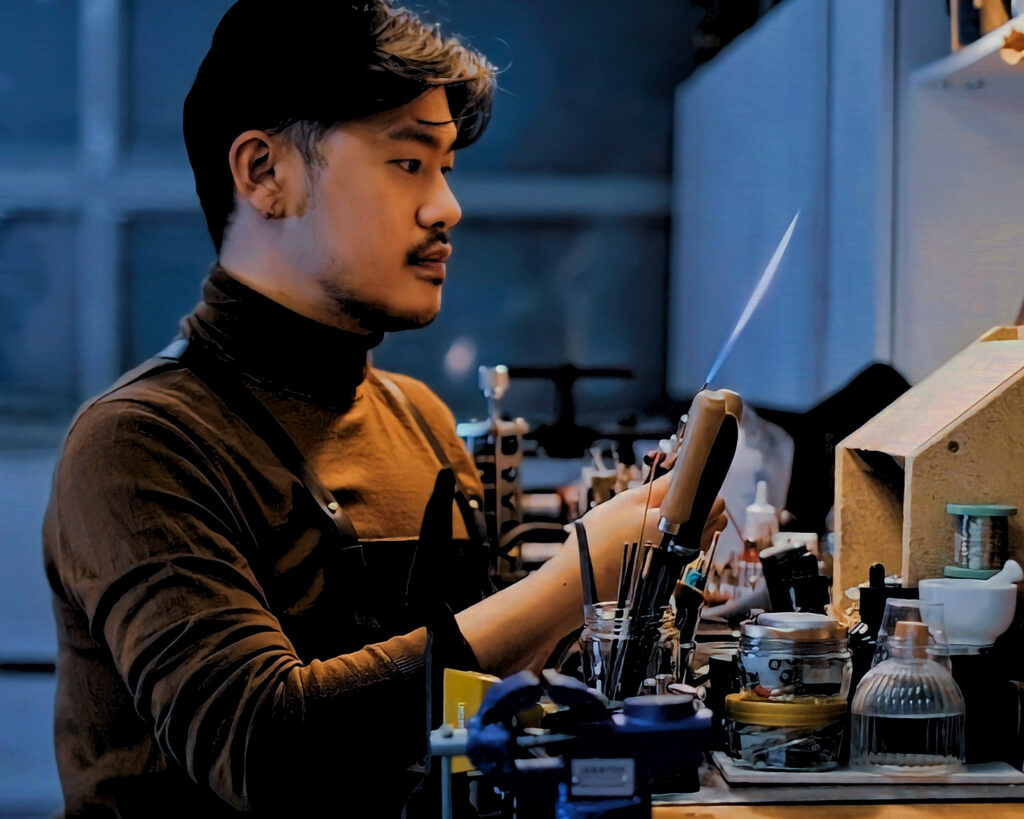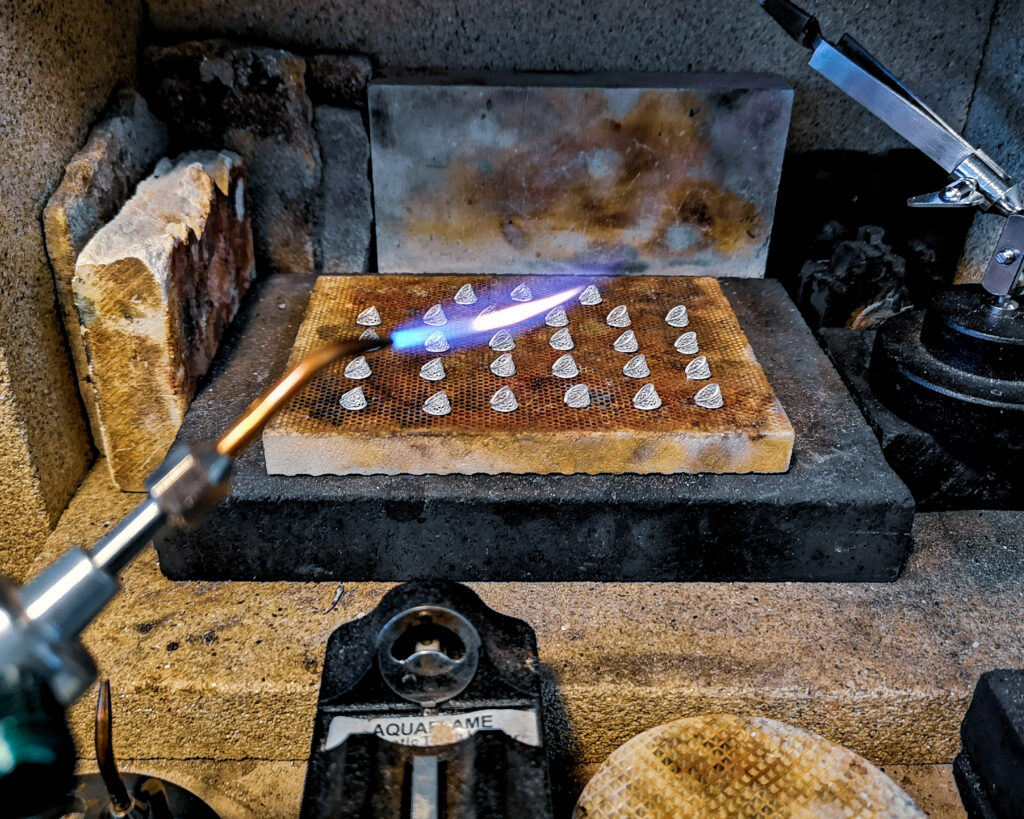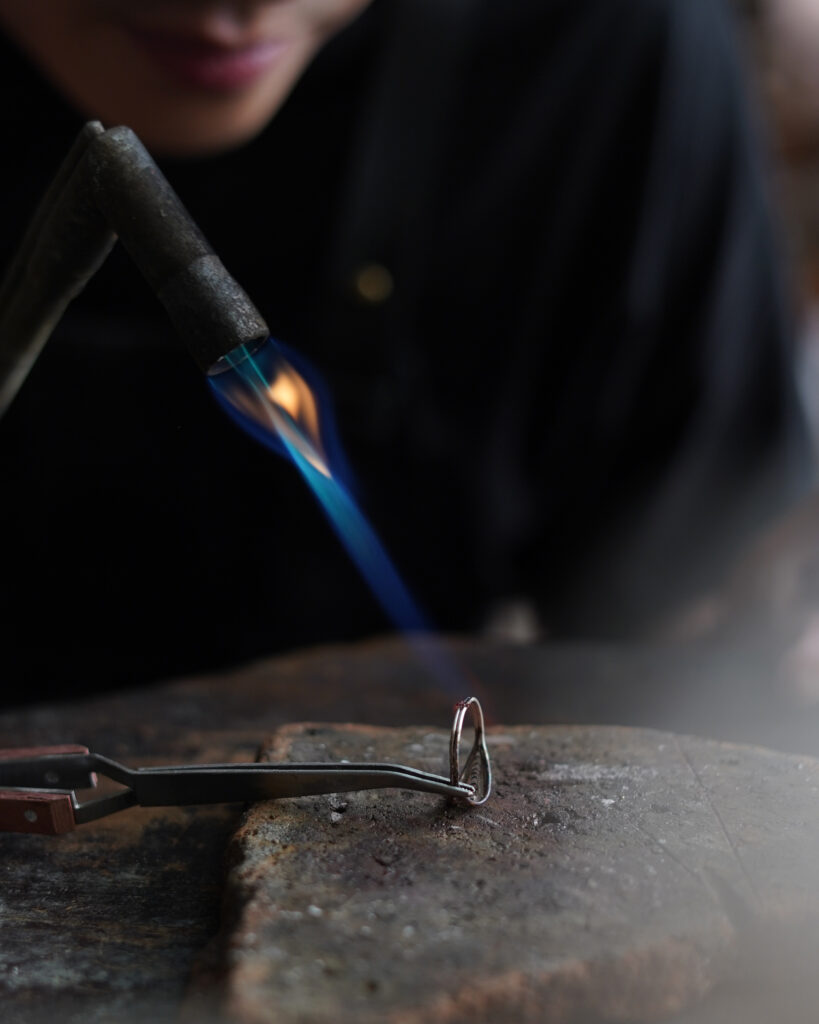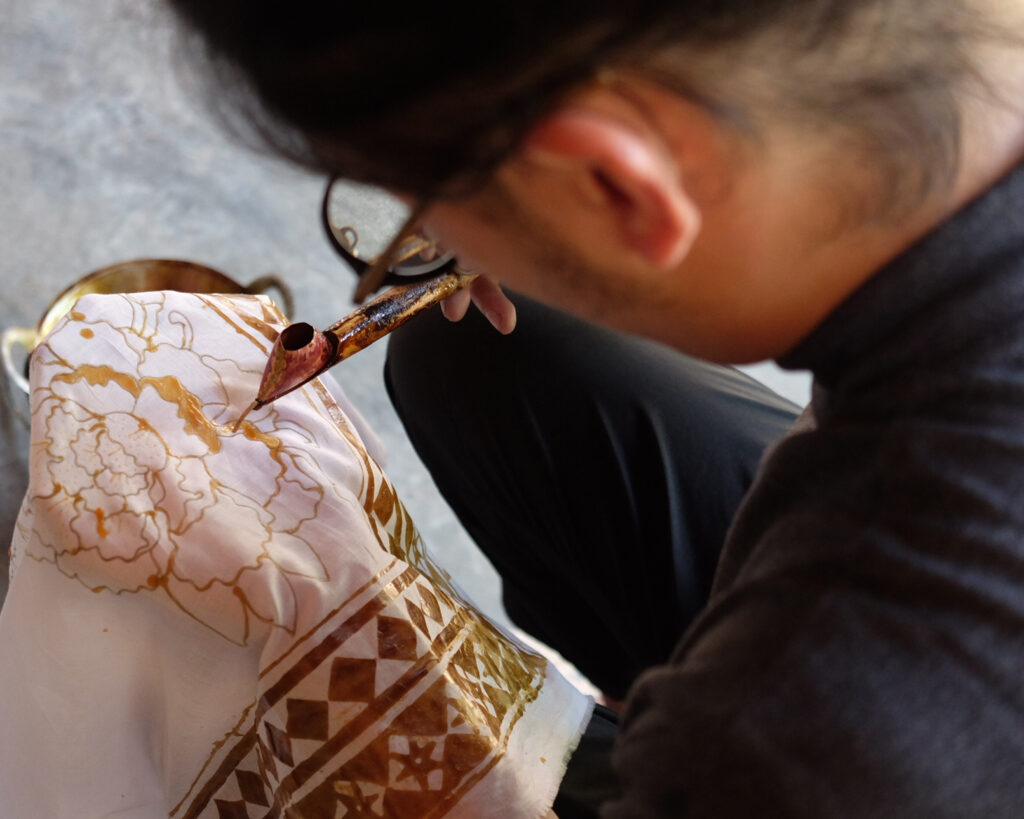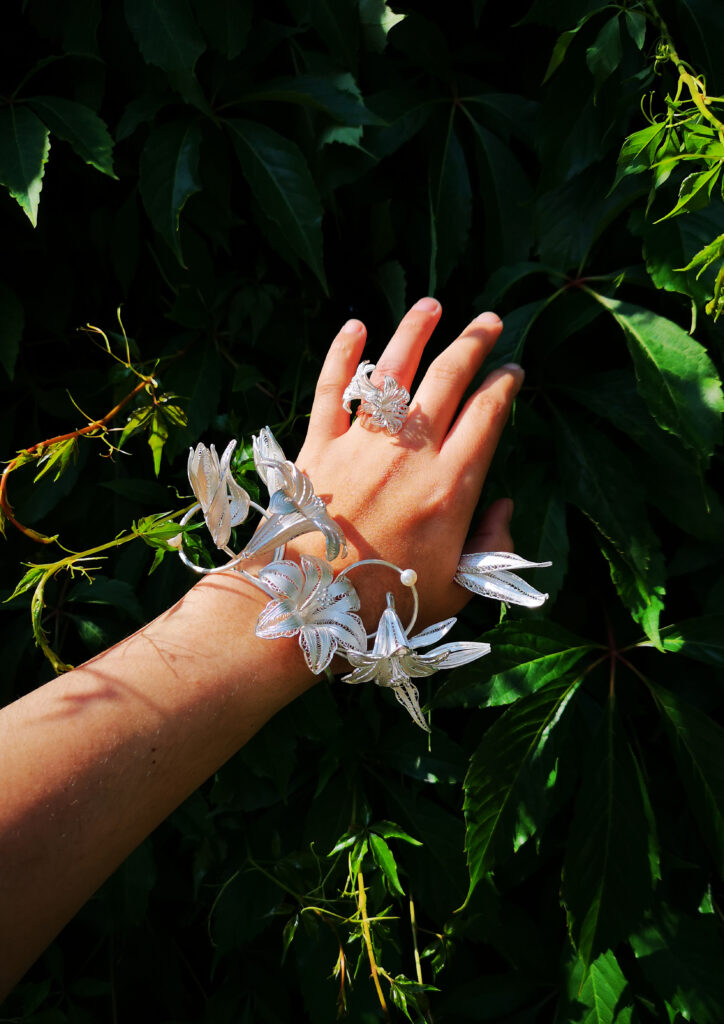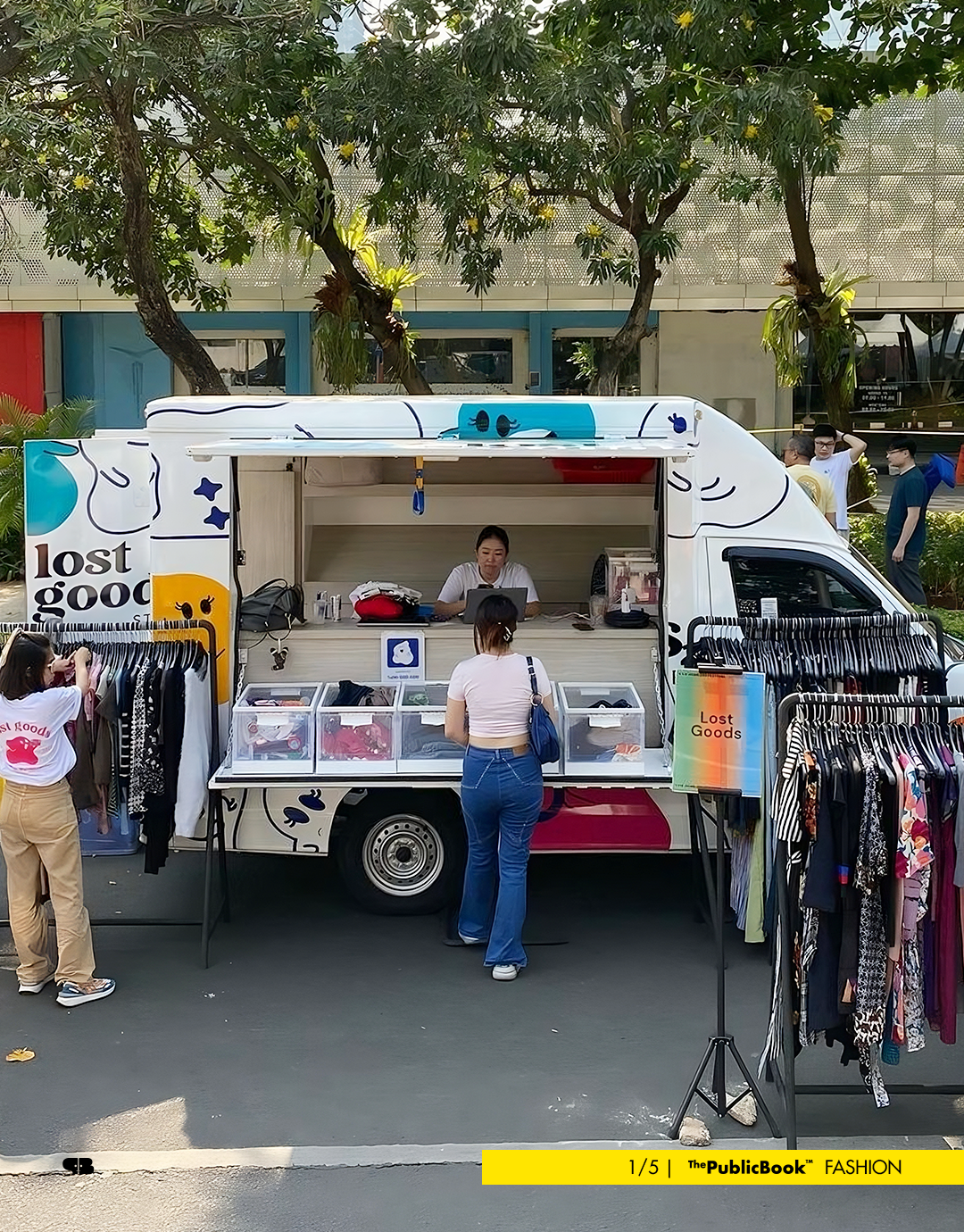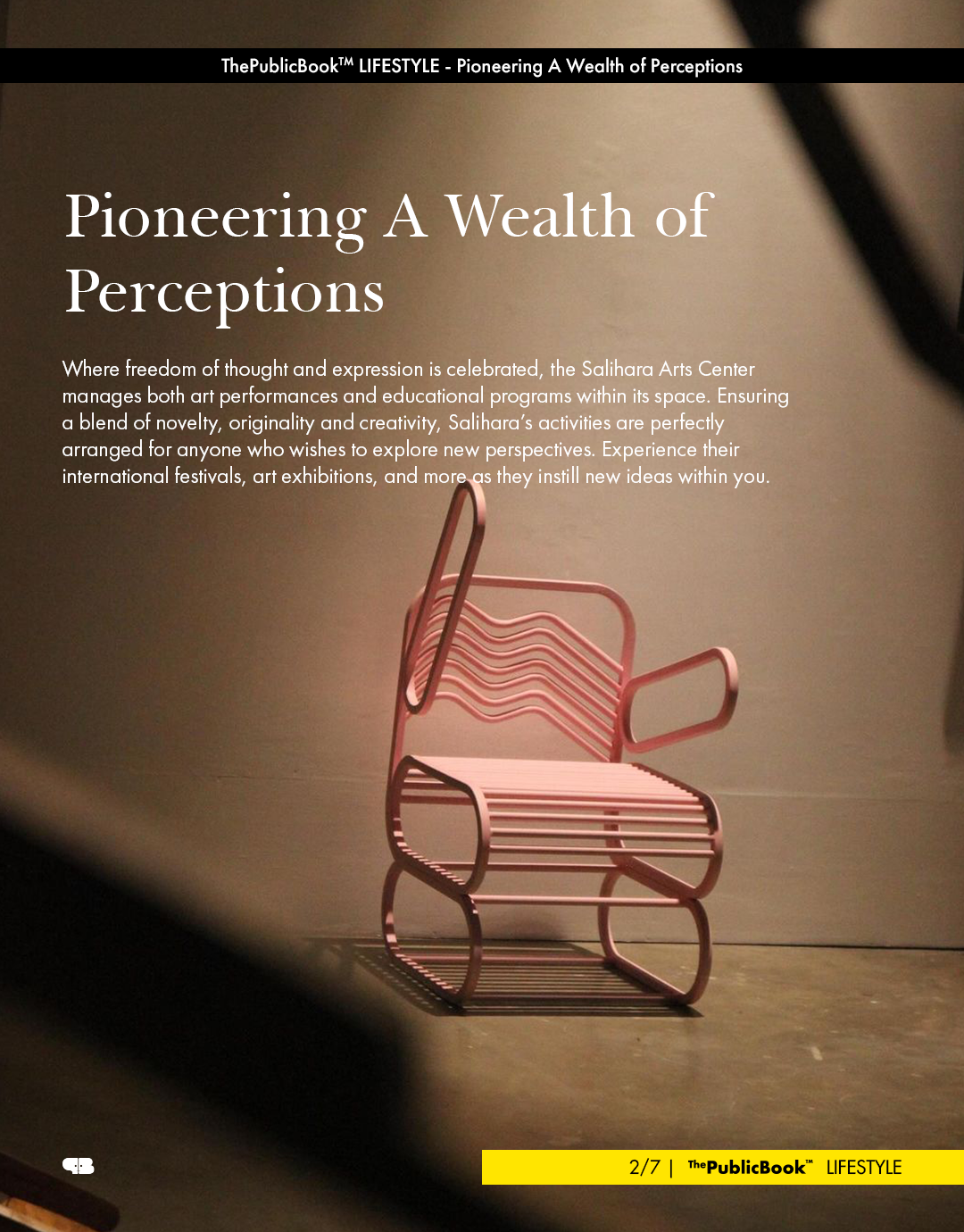Entrenched in tradition and passion.
Edwin Charmain, the creator of the elegance of Pusaka Jewellery, reveals all the story behind his adventure of becoming a jeweler. To The Public Book, he uncovers everything you want and need to discover about the Indonesian London-based jewellery brand.
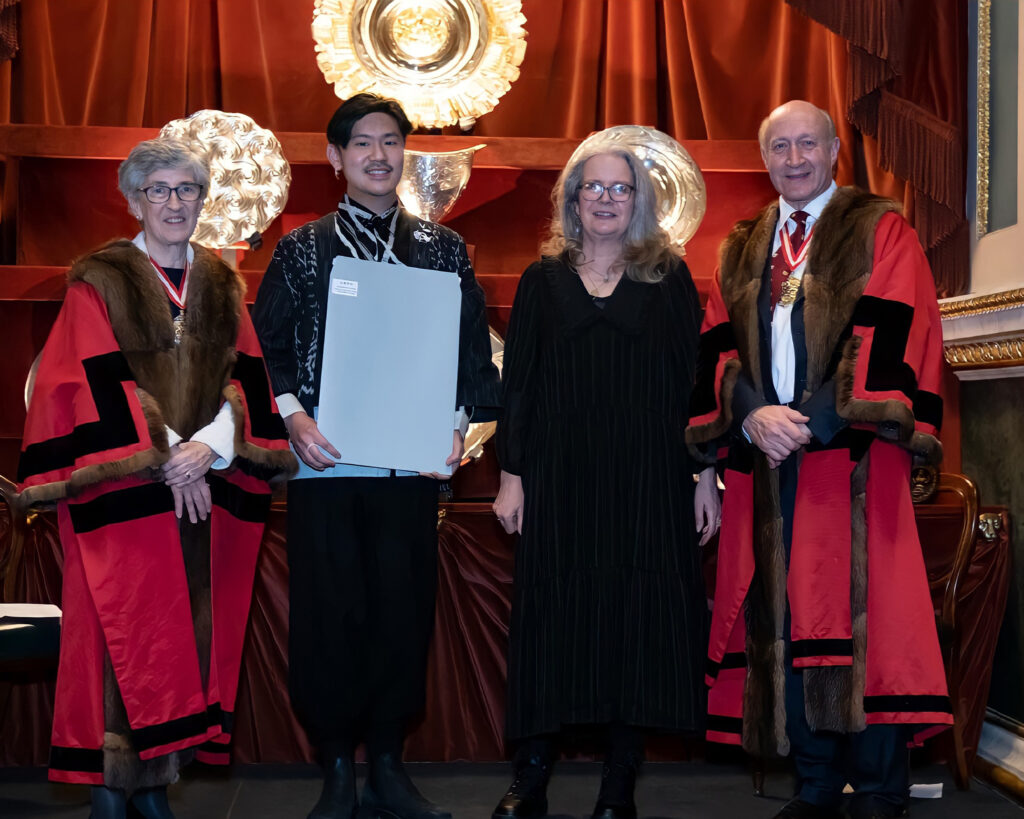
1.Can you please introduce yourself?
EC: My name is Edwin Charmain. My family’s basic textiles are batik. These batik motifs are the inspiration for my works. Because I usually use Pekalongan batik motifs with flowers, most of my works have themes around that.
2.Can you tell us about your background?
EC: I studied Graphic Design at Pelita Harapan University and got a Bachelor of Arts. Then, I took Jewellery Design at Central Saint Martins College of Arts and Design in London, England, getting a Master of Arts degree.
3.What inspired you to finally make you focus on having a career as a jewellery designer?
EC: After graduating with a Bachelor’s degree, I worked at a graphic design studio in Jakarta where most of my projects involved fashion and restaurants, with a design approach that was not only on paper but in other media as well. Actually, there used to be a jewellery class, but it was canceled because there weren’t enough students. Finally, I realized that I like creating designs in three dimensions. I tried taking a short course in London and liked it. In Indonesia, I looked for ways that could be used with a focus on batik. Coincidentally, at that time I met a filigree craftsman in Kota Gede and I studied there. If you pull out the red thread, the process for making filigree and batik is more or less the same. Well, my jewellery is actually trying to create three-dimensional shapes from batik if you draw batik with wax, filigree with wire, silver, or gold.
4.Can you run us through the journey that led you to establish Pusaka Jewellery?
EC: It all started with my master’s thesis which raised sustainability, which at that time had just been introduced to society. However, what I raised was not about materials, but culture and craftsmen. Then, the first collection was created which was called “Pusaka” because it took the common thread between the jewellery and batik from historical references, namely what kings and princesses wore in ancient times, which was mostly found in headpieces.
Then, from there, the Pusaka Jewellery brand was formed which has a vision that the jewellery produced is not only worn once or twice but can be continuously passed down to children and grandchildren because each piece of jewellery has its own story and meaning. In fact, the brand has been around since 2018, but officially it was 2020. So, in 2018 I returned to Indonesia because of Visa obstacles. Then, during the year, I happened to receive invitations from various exhibitions such as from Italy, Romania, Germany, the United States, England, and many more. After that, I got a Talent Visa and returned to London. So, 2020 is because I just registered the brand there.
5.Would you share with us some of the challenges you’ve faced in building and growing Pusaka Jewellery, and how have you overcome them?
EC: The challenges are actually many. Right now I’m like a one-man army. I do everything from the design process to manufacturing, marketing, and so on. But sometimes there are also people who help, like acquaintances. We got all of that from our relationships during the exhibition. Then, we also got help from students who knew us from lecture materials, but I didn’t know who put us in. From there we got apprentices who I could teach. That’s why I became a jewellery workshop technician. For now, our team consists of me and two other people.
Building this jewellery brand is not as easy as the others. When I first started, I was warned by lecturers and seniors. They advised me to be patient and not rush. In five to ten years it is impossible to settle. In fact, just to get clients, you have to do it regularly, from exhibition to exhibition, and then they will come to you. What’s more, my family and I have no jewellery background.
6.Pusaka Jewellery incorporates elements of Indonesian culture and heritage. How is your process of combining these traditional motifs into your contemporary designs? And maybe some insights into your design process?
EC: Actually, that’s just by default. However, what needs to be done first is to study the motifs as to what they mean, then break them down one by one into separate elements. Then, determine the ending of the story, and look for the combining elements. Then, just trial and error. Usually, I do research, make a rough sketch, and then start making it. Don’t forget, to diligently look for references and information. Luckily, there are lots of museums and exhibitions in London. So, I go there often to see what’s trending. There, the archives are also well documented, so we can see what collections the museum has so that we can observe it directly from up close. From the contemporary ones we break down, we break down the traditional ones, then we combine them into one.
7.Tell us your biggest idol or artist that somehow influences you in your artworks?
EC: In terms of jewellery, there is a couple, namely Yunus & Eliza. They made accessory designs for Game of Thrones. Their work is very sculptural but still wearable. That’s what I like. The fashion designer is Iris van Herpen from the Netherlands. She combines 3D laser cutting in every dress she makes. These two often inspire me. In fact, when it comes to my own work, I often take references from Indonesia, such as from traditional dancers and princesses from ancient palaces.
8.Can you highlight one of your favorite pieces or collections from Pusaka Jewellery and the story behind it?
EC: All favorites. But there is one that even now is still difficult to let go if someone wants to buy it. I don’t have the item now because it is still being shown for an exhibition in London. You can check on our Instagram. The shape is a bracelet whose design is inspired by the Buketan Bunga motif which is one of the Pekalongan batiks. The work taken as a reference was by Eliza van Zuylen, one of the Indo-European batik maestros who lived in Pekalongan. The motif is a Lily flower, then there are 2 pearls, for the flowers which are in bloom, still in bud, and half in bloom, which depicts the growing process. This batik is decorative in nature and is usually used for kebaya bottoms. That’s why the jewellery becomes a statement bracelet that wraps from the wrist to the palm of the hand. The concepts are wedding, feminine power, purity, and beauty.
9.What are your aspirations for Pusaka Jewellery in the future?
EC: Next, we want to provide a short course and education regarding filigree making. Our hope is that in the future we can support craftsmen. Of our total sales per year, we set aside 10 to 15 percent to help them, not in financial form, but in the form of equipment, training, and also for the next generation who want to learn. There we open a placement for students who want to learn. This filigree technique is categorized as an endangered craft because it is difficult to do, not everyone can do it. We also want to promote Indonesian culture on the international stage.
10.Finally, what advice would you give to aspiring jewellery designers or entrepreneurs looking to break into the industry?
EC: Don’t be afraid to try. There is no instant. Everything that is obtained instantly, will be taken immediately. Don’t compare yourself with others. Find your true own voice, believe in that voice, and listen to that voice. Slowly but steadily make your move whatever it takes. Eventually, you will be successful and there will be someone to help. If you try, are honest, and your intentions are good, there will be a way. Understand the struggle. For me, I find satisfaction and happiness in the process, not in the end result. Because I already know the final result. Doing then failing is better than not doing at all.
